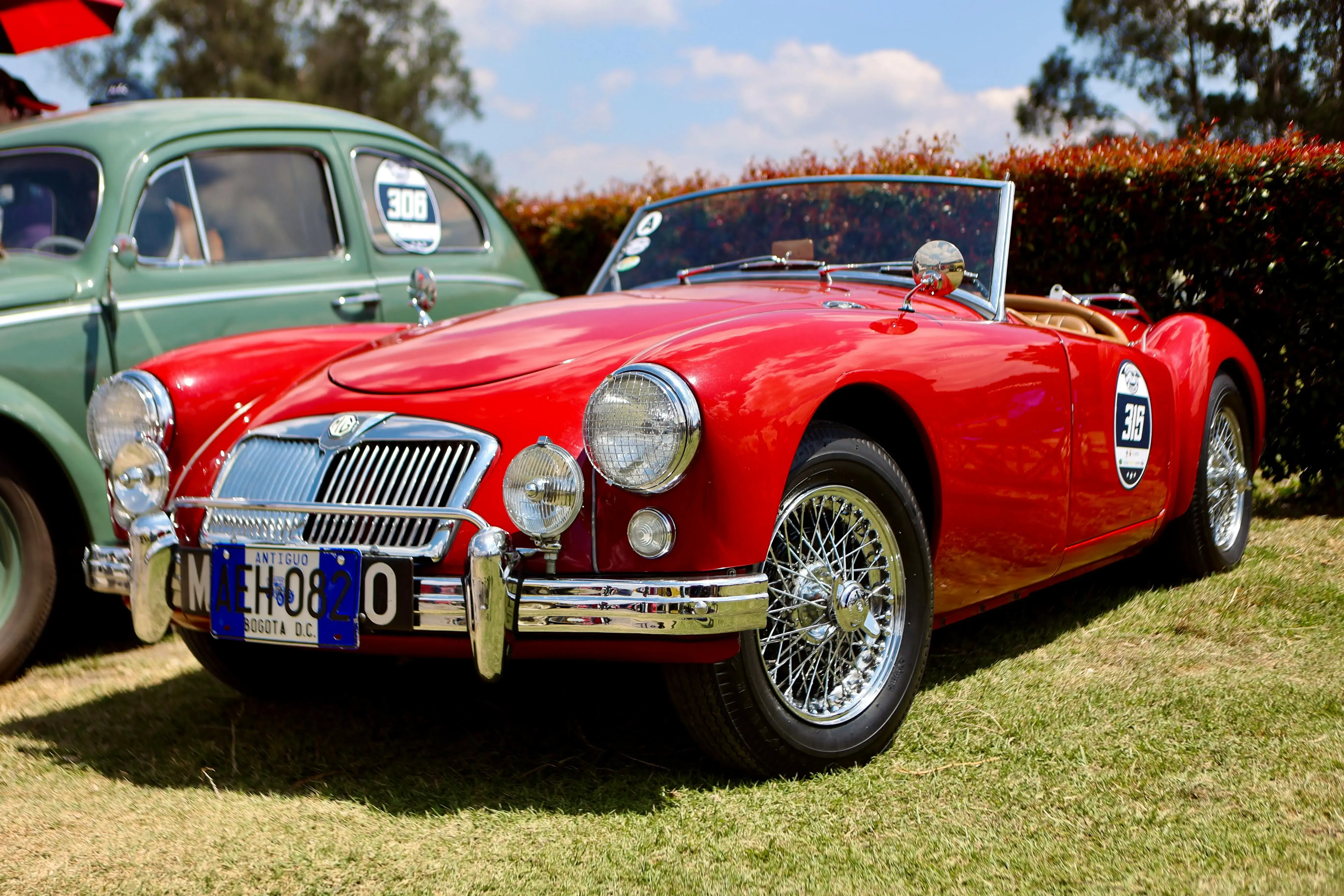What Happens After You Find A Car On A German Import Website?
The thrill of discovering your dream German vehicle online—scrolling through Mobile.de listings to find that pristine 1995 BMW M3, winning a Collecting Cars auction for a rare Porsche 993, or negotiating an AutoScout24 deal for a classic Mercedes-Benz—represents just the beginning of international vehicle acquisition. The moment you click "Buy Now" or shake hands (virtually) with a German seller, a complex international logistics journey begins spanning German export procedures, transatlantic ocean shipping, U.S. customs clearance, and final inland delivery. Without experienced import partners managing these intricate phases, your exciting online purchase can transform into a frustrating maze of unfamiliar regulations, language barriers, documentation challenges, and coordination headaches across multiple countries and service providers.
West Coast Shipping eliminates this complexity through complete door-to-door import management, taking over the entire post-purchase process from the moment you finalize your German vehicle acquisition. Our comprehensive service model means you never coordinate with German export authorities, communicate with ocean carriers, navigate U.S. Customs and Border Protection requirements, or arrange multi-state inland transport—we handle every phase while keeping you informed through regular updates, providing a single point of contact from German pickup through final U.S. driveway delivery.
This detailed guide walks through exactly what happens after you find and purchase a vehicle on German import websites, demonstrating how West Coast Shipping's expertise transforms complex international logistics into streamlined, predictable processes.
Phase 1: Purchase Finalization and Initial Documentation
The transition from "interested buyer" to "vehicle owner" requires careful attention to documentation, payment processing, and export preparation—critical foundations preventing customs delays months later.
What You Do: Complete Your Purchase
Finalize Pricing and Terms: Negotiate final purchase price with seller (whether Mobile.de private party, AutoScout24 dealer, or Collecting Cars auction house), establishing payment method, timing, and pickup coordination window.
Secure Purchase Contract: Obtain written purchase agreement documenting vehicle specifications (VIN, year, make, model, engine), agreed price, seller information, and transaction date. German sellers typically provide Kaufvertrag (purchase contract) for private sales or professional invoices for dealership transactions.
Arrange Payment: Transfer funds via international wire transfer (most common), currency exchange services, or escrow for high-value transactions. German sellers generally require full payment before releasing vehicles.
Contact West Coast Shipping: As soon as purchase is confirmed, provide our team with seller contact information, vehicle location, and preliminary documentation—initiating our coordination process while you handle payment.
What West Coast Shipping Does: Documentation Review and Seller Coordination
Comprehensive Document Verification: Our team reviews all seller-provided documentation ensuring completeness before vehicles leave German territory:
-
Zulassungsbescheinigung Teil II (modern German registration certificate, often still called Fahrzeugbrief by sellers): Verifies legal ownership and vehicle specifications
-
Purchase contract (Kaufvertrag): Confirms transaction details for customs value declaration
-
Manufacturing date evidence: Critical for 25-year rule eligibility—we verify factory build sheets, data plates, or VIN decoding confirms age qualification
-
Service records (Serviceheft): Documents maintenance history supporting condition claims
-
TÜV/AU certificates: German inspection certificates demonstrating mechanical condition
Documentation Gap Identification: We identify missing paperwork while vehicles remain in Germany—much easier to obtain from sellers before shipping than to request via international communication after vehicles depart.
Seller Communication: Our German-language-capable European logistics partners contact sellers directly, establishing:
-
Optimal pickup timing accommodating seller availability
-
Exact vehicle location and access procedures
-
Export documentation requirements and processing
-
Special considerations (keys, accessories, spare parts included)
Export Preparation Guidance: We advise sellers unfamiliar with export procedures about required documentation, customs declarations, and deregistration from German vehicle registry (Abmeldung).
Timeline: 2-5 business days for complete documentation review, seller coordination, and pickup scheduling.
Phase 2: German Vehicle Pickup and Port Transport
Coordinating vehicle collection across Germany—from Munich dealerships to rural Bavarian private sellers—requires local expertise, flexible scheduling, and professional vehicle handling.
What You Do: Provide Vehicle Location Details
Share Seller Information: Give us complete seller contact details (name, phone, email, address) and vehicle precise location.
Communicate Special Circumstances: Inform us of any unique situations—vehicles stored in private garages requiring appointment scheduling, multiple key sets, included spare parts needing separate packaging, or accessibility challenges.
Remain Available for Questions: Occasionally sellers raise last-minute questions or requests—we'll contact you if anything requires your input or decision.
What West Coast Shipping Does: Professional German Pickup Coordination
Nationwide Pickup Network: Our European logistics partners operate throughout Germany, coordinating professional vehicle collection from any location:
-
Major Cities: Munich, Berlin, Frankfurt, Hamburg, Stuttgart, Cologne
-
Regional Centers: Smaller cities throughout Bavaria, Baden-Württemberg, North Rhine-Westphalia, and all German states
-
Rural Locations: Private residences, farm storage, remote garages anywhere in Germany
Flexible Scheduling: We accommodate seller availability—coordinating pickups around business hours, personal schedules, and any timing requirements ensuring convenient handoffs.
Professional Vehicle Inspection: Upon pickup, our logistics partners conduct thorough photo documentation recording vehicle condition from all angles, capturing existing damage, special features, and overall state—protecting both you and seller with clear evidence of pre-shipment condition.
Secure Transport to Port: Vehicles transport via professional carriers to departure ports (typically Bremerhaven for North American shipments, occasionally Hamburg):
-
Enclosed transport available for high-value vehicles requiring weather protection
-
Open transport standard for most classic vehicles
-
GPS tracking throughout German inland transit
-
Approximately 1-3 days German inland transport depending on pickup location distance from ports
German Export Processing: While vehicles transport to port, we coordinate German customs export clearance:
-
Customs Export Declaration: Required documentation declaring vehicle's departure from EU customs territory
-
Deregistration (Abmeldung): Removal from German vehicle registry—required before export, prevents ongoing tax/fee liability for sellers
-
Commercial Invoice Preparation: Proper invoicing meeting both German export and U.S. import requirements
Port Storage and Preparation: Upon port arrival, vehicles enter secure storage awaiting vessel departure:
-
Climate-protected warehouse facilities
-
Security monitoring
-
Pre-loading inspection ensuring readiness
-
Container assignment coordination
Timeline: 5-10 days from German pickup through port arrival and export documentation completion—varies based on pickup location distance from ports and export processing speed.
Phase 3: Container Booking and Ocean Freight
Transatlantic shipping requires careful container selection, vessel booking, proper vehicle securing, and customs filing before departure—all coordinated by West Coast Shipping without your involvement.
What You Do: Choose Shipping Options
Container Preference: Decide between shared consolidation (most economical, vehicles share containers with other shipments) or dedicated exclusive containers (maximum protection, single vehicle or your vehicles only).
Destination Port: Confirm your preferred U.S. arrival port based on final vehicle destination:
-
New York/New Jersey: Optimal for Northeast deliveries, fastest from Germany (18 days)
-
Florida: Best for Southeast destinations (33 days from Germany)
-
California: West Coast deliveries (43 days via Panama Canal/Suez)
-
Texas: Gulf Coast regional access
What West Coast Shipping Does: Complete Ocean Freight Coordination
Container Assignment and Booking:
Shared Container Consolidation: Most customers choose consolidated shipping for optimal economics:
-
Multiple vehicles (typically 2-4 depending on sizes) share 40-foot containers
-
Professional securing prevents movement during ocean transit
-
Costs split among shippers reducing per-vehicle expenses by 30-60%
-
Same transit times and protection as dedicated containers
-
Weekly departures from German ports maintaining regular schedules
Dedicated Containers: Reserved for high-value vehicles, seven-figure collectibles, or situations where exclusive space justifies premium pricing:
-
Complete 20-foot or 40-foot container exclusive to your vehicle(s)
-
Maximum space and positioning control
-
Ideal for extensively modified vehicles, oversized dimensions, or investment-grade classics requiring isolated transport
Professional Vehicle Loading:
-
Experienced stevedores load vehicles into containers at German ports
-
Custom securing systems prevent shifting during Atlantic crossing
-
Proper weight distribution ensuring container stability
-
Photo documentation before container sealing
-
Weather-tight container sealing protecting against salt spray and ocean conditions
Ocean Freight Arrangements:
-
Vessel booking with established transatlantic carriers
-
Bill of lading preparation documenting containerized cargo
-
Route optimization based on destination port
-
Transit time confirmation and vessel tracking setup
Importer Security Filing (ISF): Required U.S. Customs filing submitted no later than 24 hours before vessel departure from German port:
-
Contains shipper, consignee, cargo details, manufacturer information
-
Known as "10+2" filing for 10 data elements plus 2 additional carrier requirements
-
West Coast Shipping files ISF on your behalf as standard service, managing all timing and accuracy requirements
-
While importers of record technically remain liable for ISF compliance under CBP regulations, our proactive filing and verification processes prevent issues—we've never had a client face ISF penalties through our professional handling
Transit Times and Routes:
-
Germany to Florida: 30-35 days direct transatlantic routes
-
Germany to New York: 18 days direct transatlantic routes
-
Germany to California: 40-45 days via Panama Canal or Suez Canal depending on seasonal routing
-
Germany to Texas: 35-40 days Gulf Coast routing
Real-Time Tracking: Once vessels depart, we provide access to vessel tracking showing current position, estimated arrival dates, and any route or schedule changes.
Timeline: 30-45 days ocean transit depending on destination port—the longest single phase of German import process.
Explore our container shipping services and compare transatlantic routing options.
Phase 4: U.S. Customs Clearance and Entry Processing
U.S. arrival triggers the most complex import phase—customs brokerage, entry filing, duty calculations, and CBP clearance under federal vehicle import regulations.
What You Do: Provide Power of Attorney and Value Confirmation
Customs Broker Authorization: Sign power of attorney form enabling West Coast Shipping's customs brokerage division to file entries, pay duties, and interact with CBP on your behalf.
Value Declaration Confirmation: Verify vehicle purchase price for customs value declaration—accurate declarations prevent CBP issues while ensuring proper duty calculations.
Respond to CBP Questions (if any): Occasionally CBP requests additional information about vehicles, manufacturing dates, or modifications—we'll coordinate any requests requiring your input.
What West Coast Shipping Does: Complete Customs Entry and Clearance
Entry Filing and Documentation:
CBP Form 7501 (Entry Summary): Official customs entry declaration filing listing:
-
Complete vehicle details (VIN, year, make, model, country of origin)
-
Declared value for duty calculation
-
Harmonized Tariff Schedule (HTS) classification codes
-
Importer of record information
-
Entry type and port of arrival
HTS Code Classification: Critical coding determining duty rates and tariff applicability:
-
Base Code: Standard passenger vehicle classification (typically 8703.23.xxxx or similar based on engine displacement and type)
-
Additional Code: HTS 9903.94.04 for 25-year-old vehicles claiming Section 232 tariff exemption
-
Proper coding prevents incorrect 25% Section 232 tariff assessment on eligible classics
DOT Form HS-7 (Vehicle Safety Compliance Declaration):
-
Declares vehicle's compliance status with Federal Motor Vehicle Safety Standards
-
For 25-year classics: Check Box 1 ("Vehicle manufactured at least 25 years ago")
-
Confirms exemption from NHTSA safety compliance requirements
EPA Form 3520-1 (Engine and Vehicle Importation Declaration):
-
Declares emissions compliance status
-
For 25-year classics: Check Box E ("Vehicle is at least 25 years old")
-
Confirms exemption from EPA emissions standards
Duty and Fee Calculation:
For 25-year-eligible classic vehicles properly coded under HTS 9903.94.04:
-
Base Import Duty: 2.5% of declared value
-
Harbor Maintenance Fee: 0.125% of cargo value
-
Merchandise Processing Fee: 0.3464% with $33.58 minimum / $651.50 maximum per entry
-
Section 232 Tariff: Exempt (avoided through proper HTS 9903.94.04 coding)
Example Calculation (€40,000 / $44,000 vehicle):
-
Base duty: $44,000 × 2.5% = $1,100
-
HMF: $44,000 × 0.125% = $55
-
MPF: $44,000 × 0.3464% = $152.42
-
Total: $1,307.42
Duty Payment: We calculate all duties and fees, paying CBP on your behalf and invoicing you for customs charges with complete transparency.
CBP Release: Once entry processed and duties paid, CBP releases vehicle from customs hold—typically 2-5 business days after vessel arrival for properly documented imports.
Physical Inspection (if selected): CBP randomly selects approximately 2-5% of vehicle imports for physical inspection verifying VIN matches documentation, checking for undeclared modifications, and confirming age evidence. If your vehicle is selected:
-
We coordinate inspection timing at port facilities
-
Provide all required documentation to CBP officers
-
Address any questions or concerns
-
Typical inspections add 1-3 days to clearance timeline
Timeline: 2-5 business days for routine customs clearance after vessel arrival; 3-7 days if physical inspection required.
Review complete U.S. import duty structures in our comprehensive import duty guide.
Phase 5: U.S. Inland Delivery to Your Location
CBP release initiates the final logistics phase—transporting your German import from U.S. port facilities to your driveway anywhere in America.
What You Do: Provide Delivery Details
Confirm Delivery Address: Provide complete residential or business address where you want vehicle delivered.
Specify Delivery Timing: Let us know any scheduling constraints, preferred delivery windows, or timing flexibility.
Arrange Vehicle Reception: Be available (or designate someone) to receive vehicle, inspect condition, sign delivery documents, and collect keys.
What West Coast Shipping Does: Professional U.S. Inland Transport
Transport Coordination: We arrange professional vehicle transport from port facilities to your location:
Open Transport: Standard method for most classic imports:
-
Multi-vehicle carriers transporting 6-10 vehicles simultaneously
-
Most economical option
-
Weather exposure during U.S. inland transit
-
Professional drivers with automotive transport experience
Enclosed Transport: Premium protection available for high-value vehicles:
-
Enclosed trailers protecting from weather, road debris, and visibility
-
Limited capacity (2-6 vehicles per trailer)
-
Higher cost but maximum protection
-
Recommended for investment-grade classics, show cars, extensively restored vehicles
Regional Delivery Economics:
-
Port-Adjacent Deliveries (within 50 miles): $200-400 typically
-
Regional Deliveries (50-300 miles): $400-800 depending on exact distance
-
Cross-Country Deliveries (1,000+ miles): $1,200-2,500 depending on specific route
Delivery Coordination: Our inland transport partners contact you directly 24-48 hours before delivery scheduling exact timing and confirming address details.
Condition Inspection: Upon delivery, inspect vehicle thoroughly before signing delivery documents:
-
Compare condition to German pickup photos
-
Document any transit damage immediately
-
Note any concerns on delivery paperwork
-
Photograph vehicle condition from all angles
Keys and Documentation: Driver provides all keys, German registration documents, and any accessories or parts that shipped with vehicle.
Timeline: 3-10 days for U.S. inland delivery depending on distance from arrival port to final destination—Northeast deliveries from New York ports complete fastest; West Coast deliveries from East Coast ports take longest.
Phase 6: Post-Delivery Support and State Registration
Vehicle arrival marks your import journey's completion, but state registration and titling represent final administrative steps before enjoying your German acquisition.
What You Do: Register Vehicle in Your State
State DMV Requirements (vary by state):
-
CBP release paperwork proving federal import clearance
-
German registration documents (Zulassungsbescheinigung Teil II)
-
Bill of sale / purchase contract
-
DOT Form HS-7 and EPA Form 3520-1 filed with customs
-
VIN verification by law enforcement or AAA
-
State safety inspections (required in some states)
-
Emissions testing (varies by state—some exempt 25-year vehicles, others require testing regardless of age)
-
Title application and registration fees
State-Specific Challenges:
-
California: Among strictest registration requirements; may require BAR referee inspections for certain imports and emissions testing despite federal exemption
-
New York: Comprehensive safety inspections and strict documentation review
-
Massachusetts, Connecticut: Detailed requirements with emissions and safety testing
-
Florida, Texas, Montana: Generally more straightforward processes with fewer restrictions
Important: Research your specific state's requirements before purchase—some states' requirements may affect vehicle selection decisions.
What West Coast Shipping Does: Documentation Support
Provide Complete Import Documentation: We supply all customs clearance paperwork required for state registration:
-
Certified copies of CBP Form 7501 showing federal clearance
-
DOT Form HS-7 and EPA Form 3520-1
-
Duty payment receipts
-
ISF confirmation
Registration Guidance: While we don't provide DMV services, we advise on typical registration requirements and documentation state DMVs expect.
Ongoing Support: Questions about import documentation or process? Our team remains available after delivery helping resolve any documentation questions that arise during state registration.
Complete Timeline Summary
Total German Purchase to U.S. Driveway: Approximately 50-70 days
-
Phase 1 (Purchase & Documentation): 2-5 days
-
Phase 2 (German Pickup & Port Transport): 5-10 days
-
Phase 3 (Ocean Freight): 30-45 days
-
Phase 4 (U.S. Customs Clearance): 2-5 days
-
Phase 5 (U.S. Inland Delivery): 3-10 days
Longest Single Phase: Ocean transit consuming 60-70% of total timeline.
Shortest Single Phase: Customs clearance for properly documented imports.
Greatest Variable: German pickup timing (depends on seller availability and location distance from ports) and U.S. inland delivery distance.
Calculate Your Complete German Import Costs
Ready to understand total costs from German purchase through U.S. driveway delivery? West Coast Shipping's car import calculator provides instant comprehensive estimates including:
-
Ocean freight from Germany to optimal U.S. ports
-
Complete U.S. import duty calculations (2.5% base for 25-year classics)
-
All federal fees (HMF, MPF)
-
U.S. inland transport from port to your ZIP code
-
Total door-to-door cost projections
Get personalized import estimates in under 60 seconds with complete transparency.
For complete information about German vehicle import websites and vehicle sourcing, see our comprehensive German import marketplace guide.
Let West Coast Shipping Handle Your German Import Logistics
Found your dream German vehicle online? Let West Coast Shipping take over the complex international logistics from purchase completion through final U.S. delivery—providing single-point-of-contact coordination, expert customs brokerage, and complete door-to-door service transforming online discoveries into driveway reality.
You May Also Like
These Related Stories

Container vs RoRo to Morocco: Which Shipping Method Is Best?

Step-By-Step Car Import Process USA To Turkey: Complete Guide

-093789-edited.png?width=220&height=79&name=wcs_final_logo_(1)-093789-edited.png)
